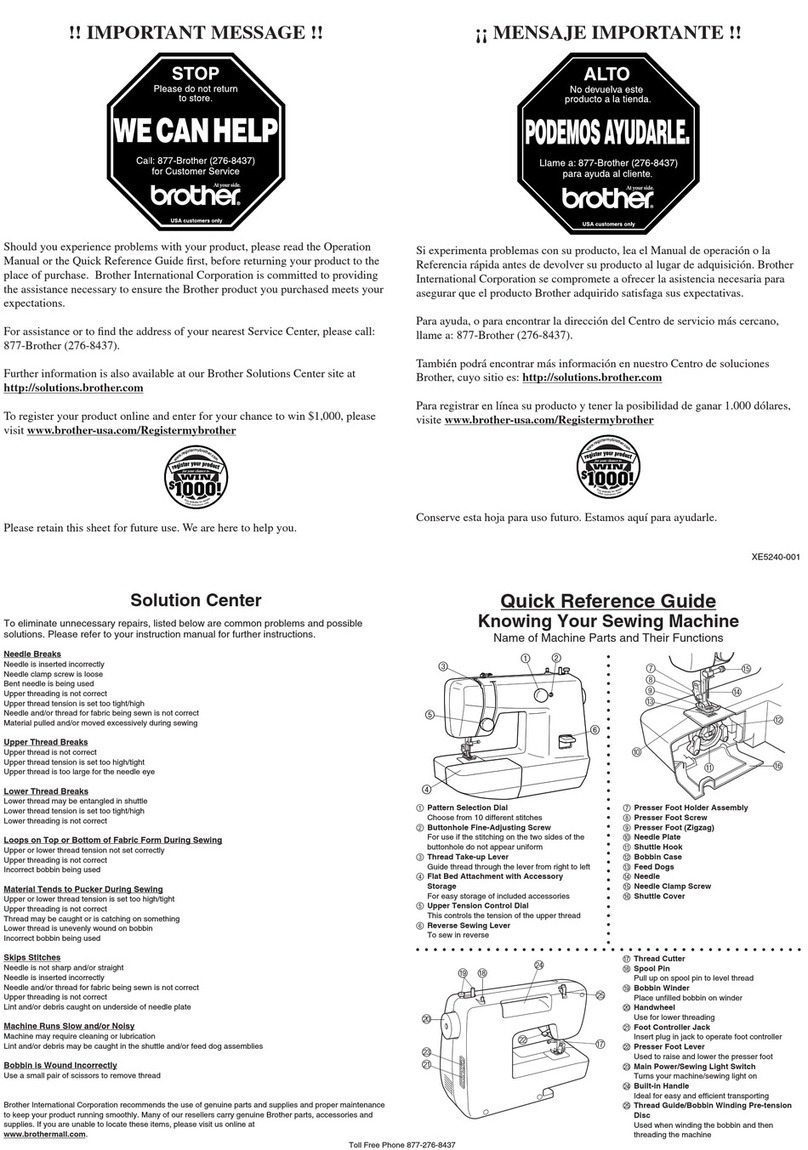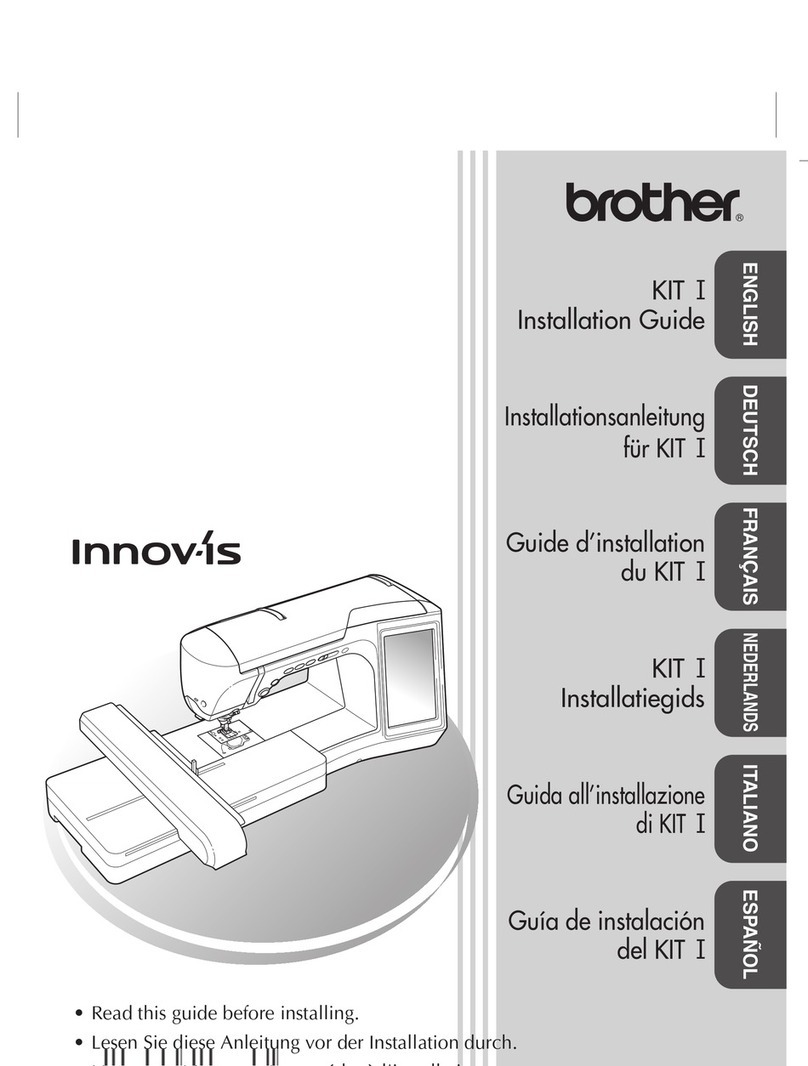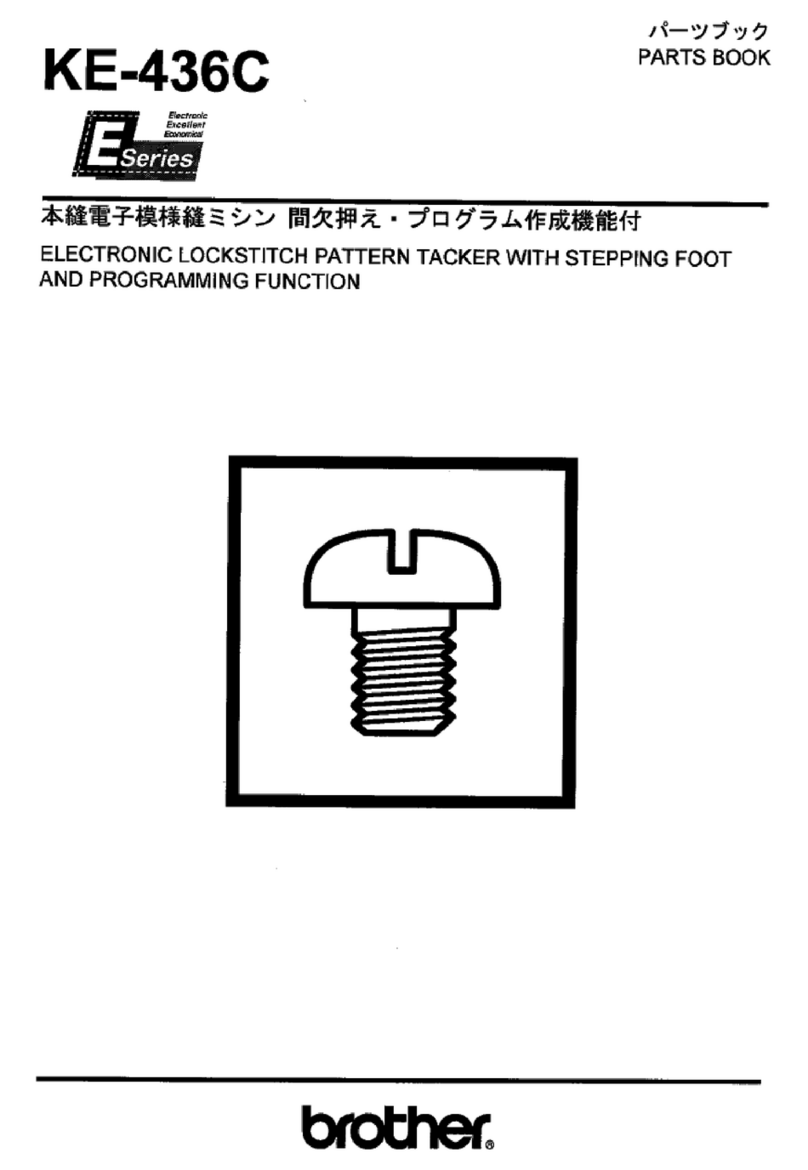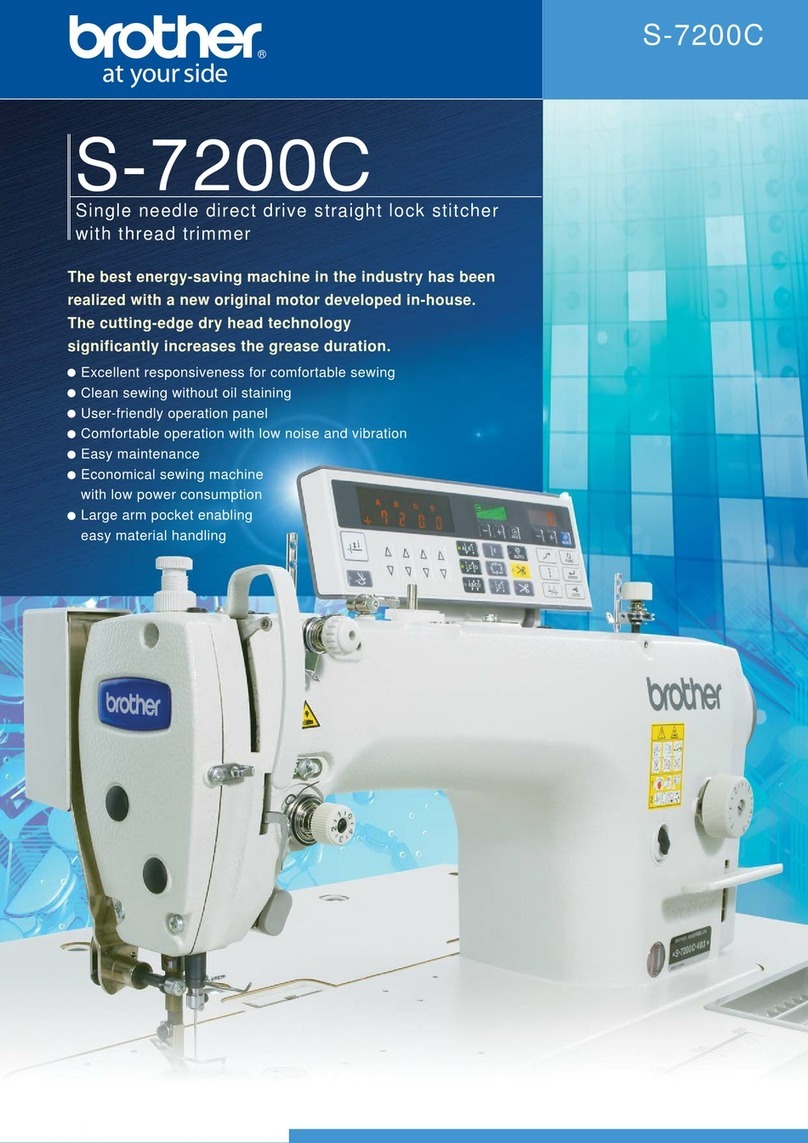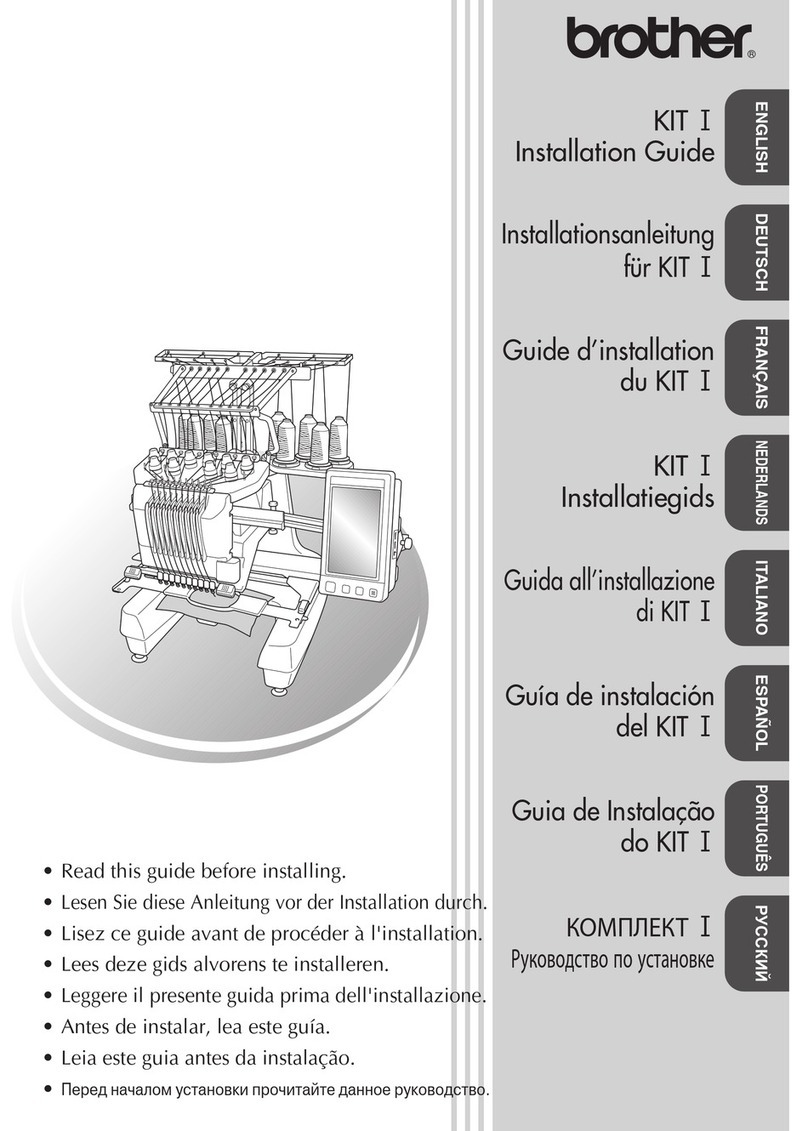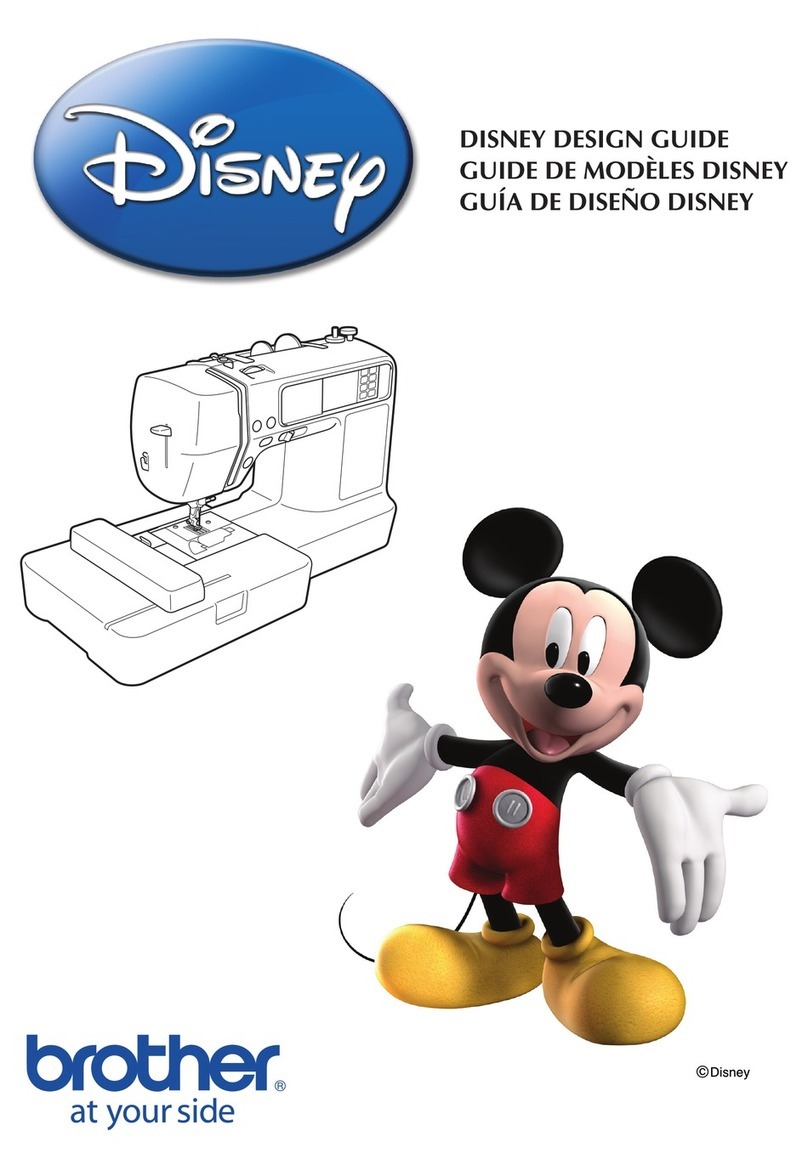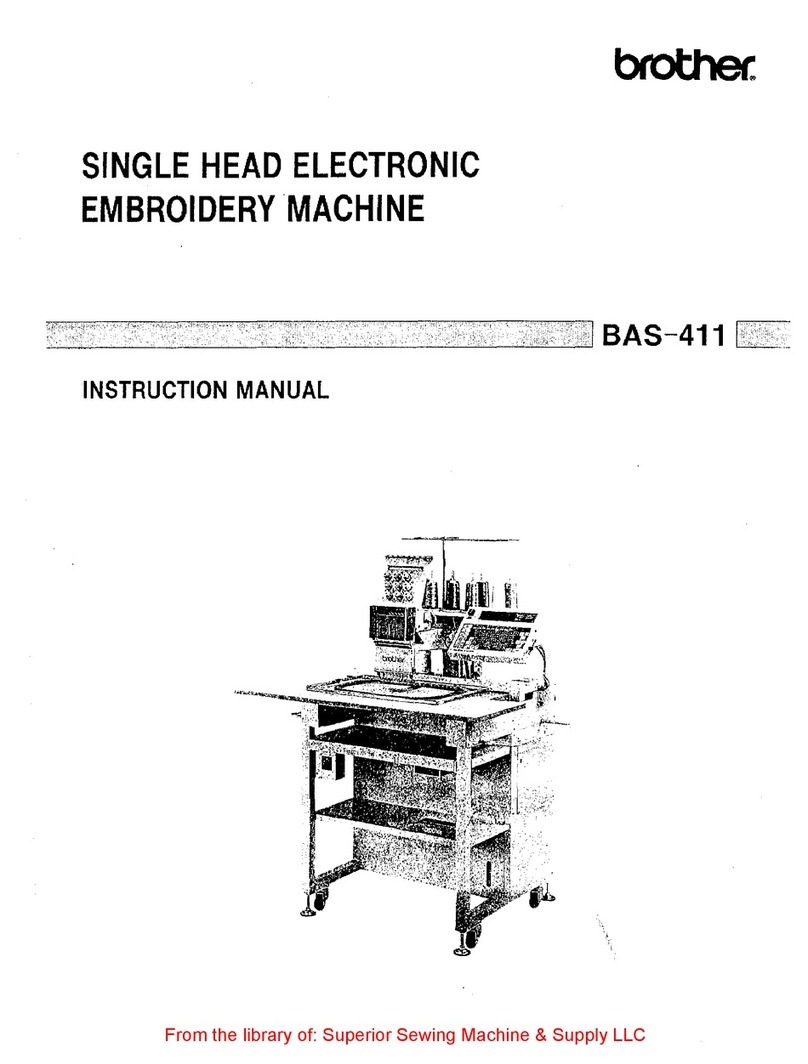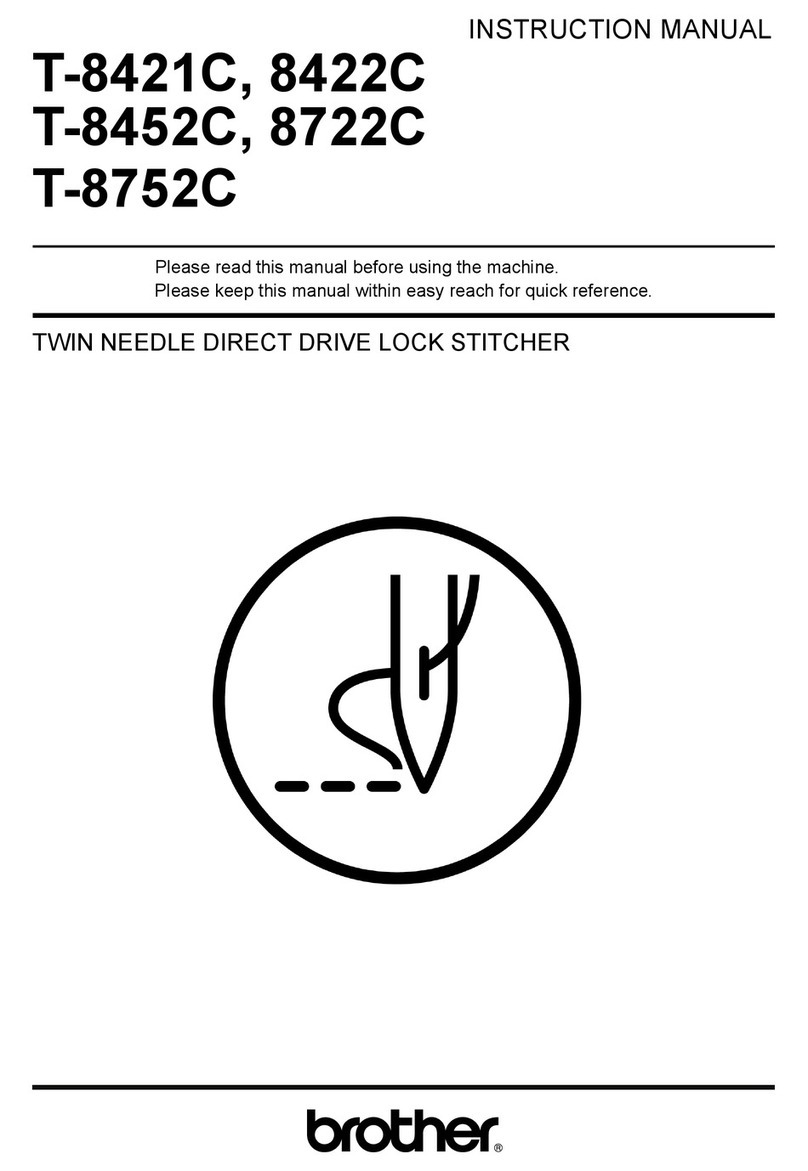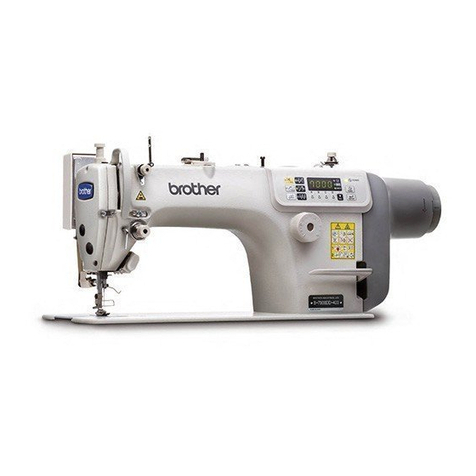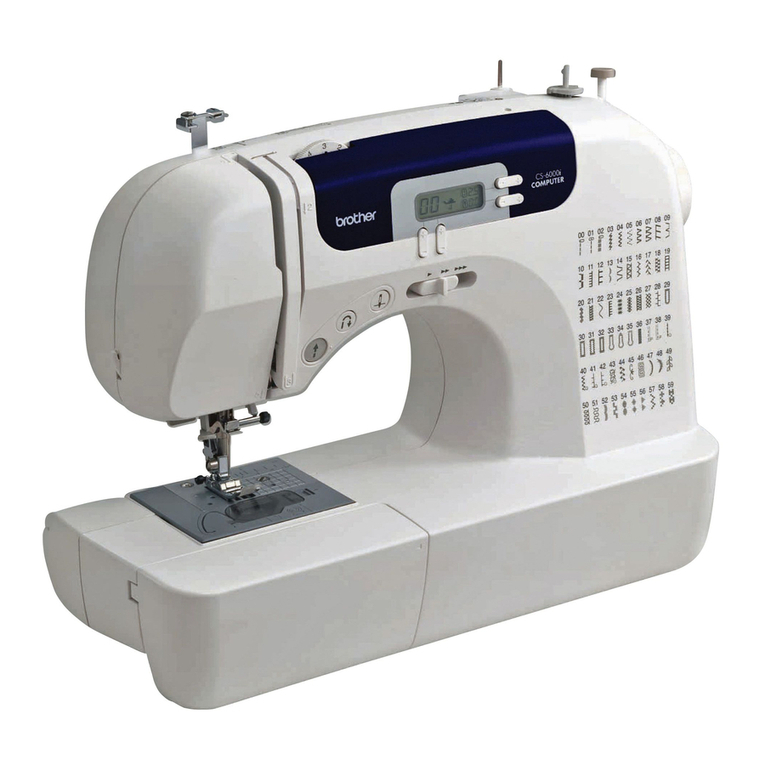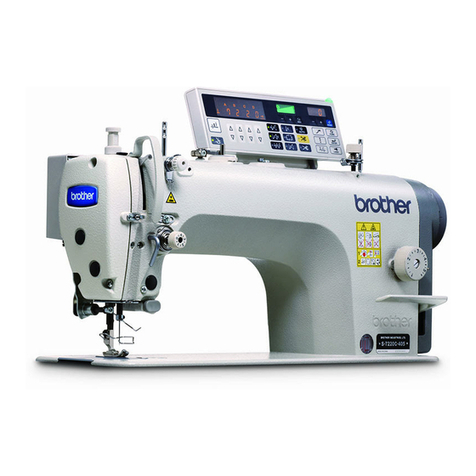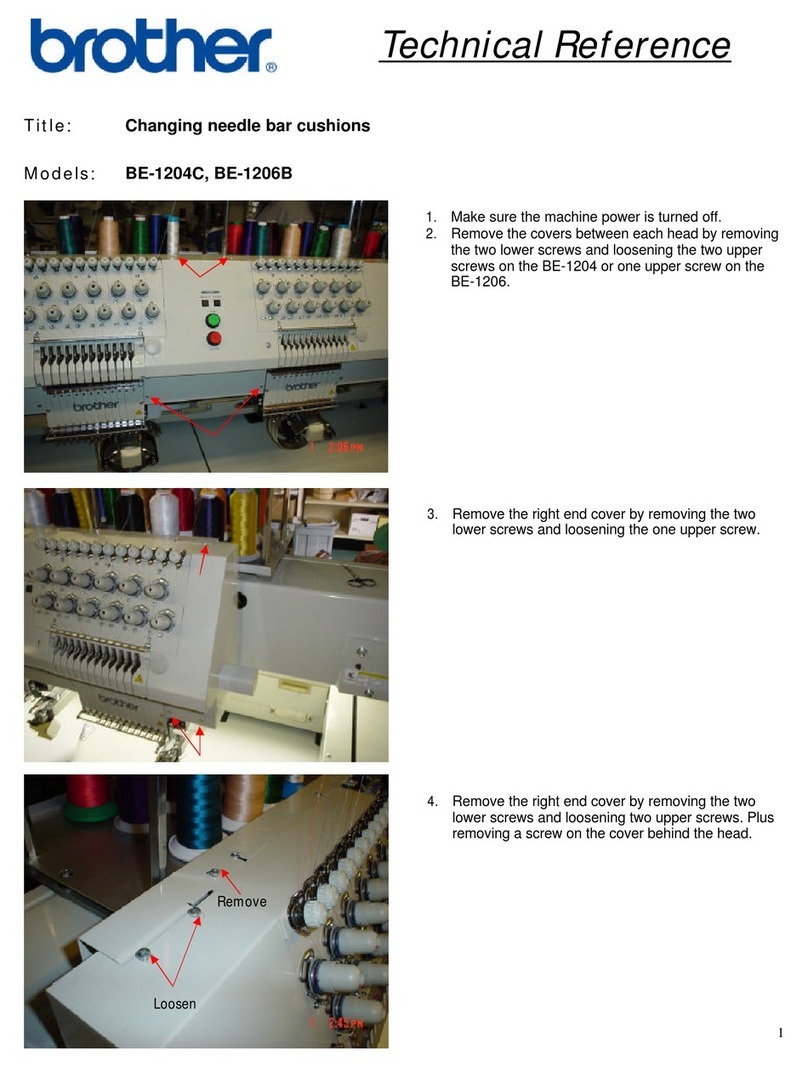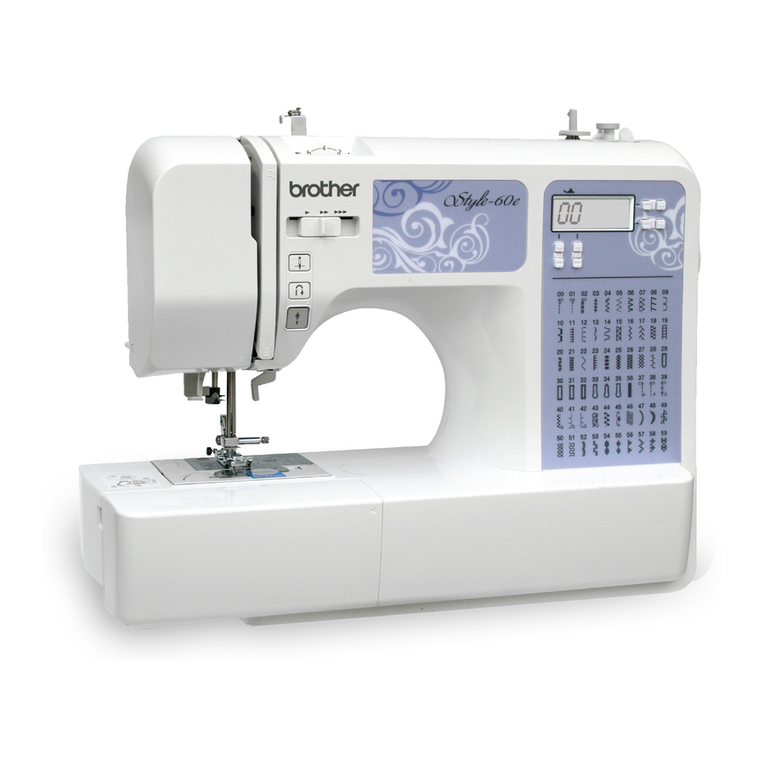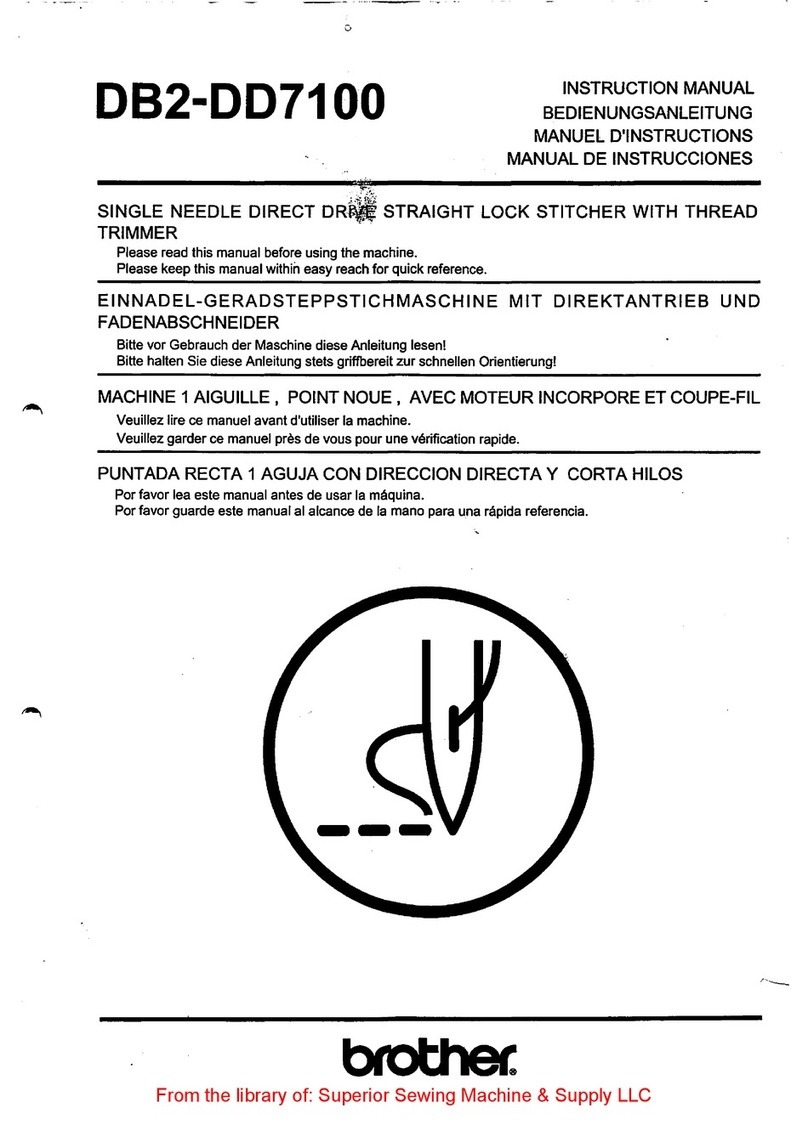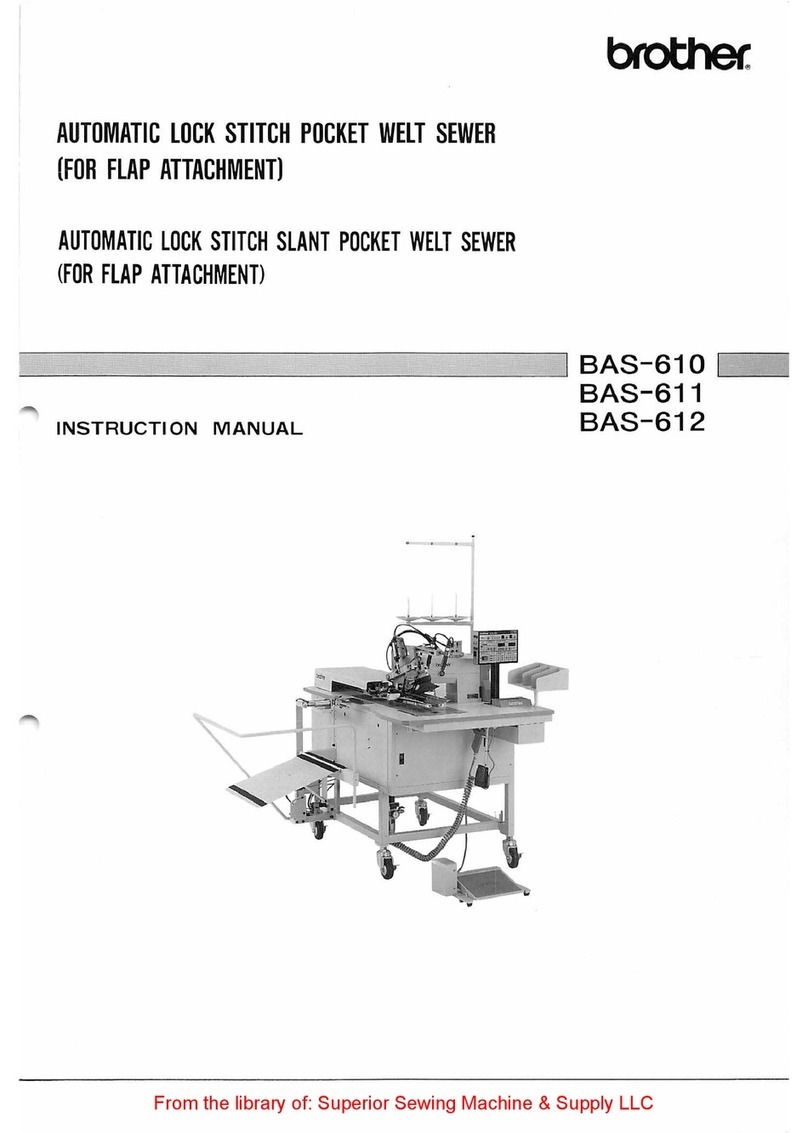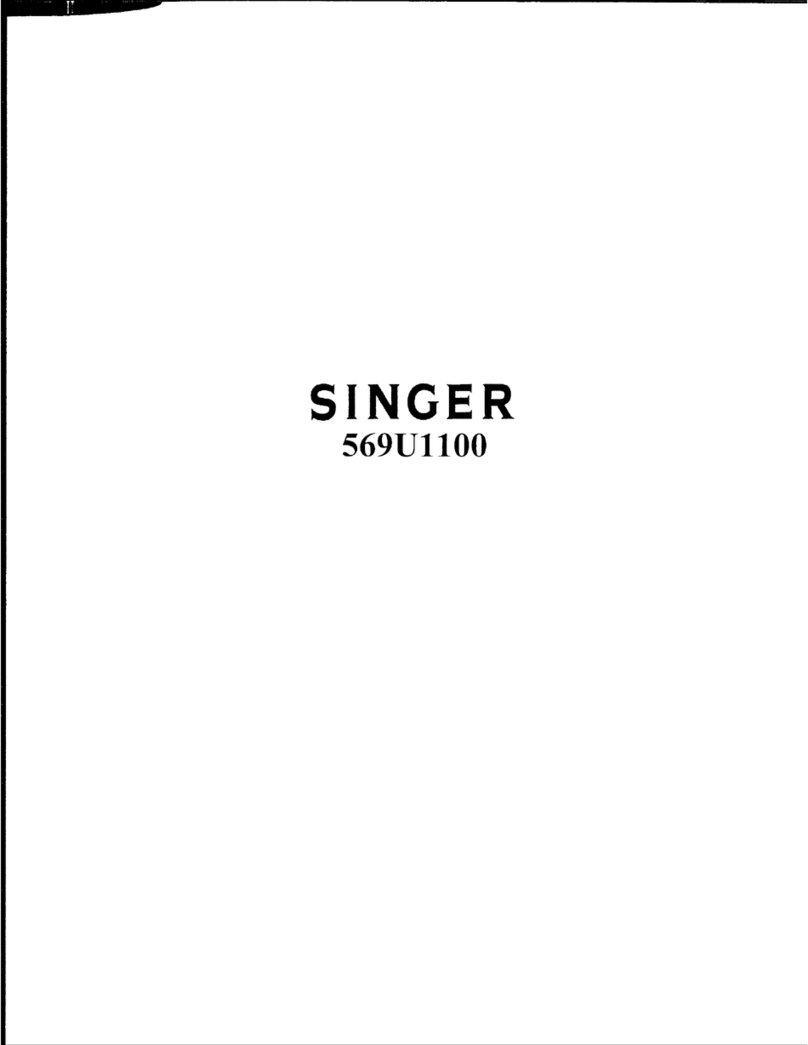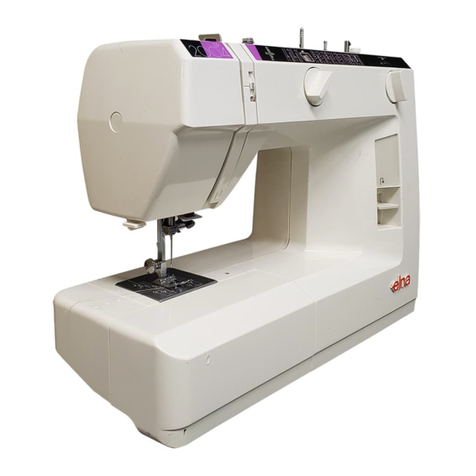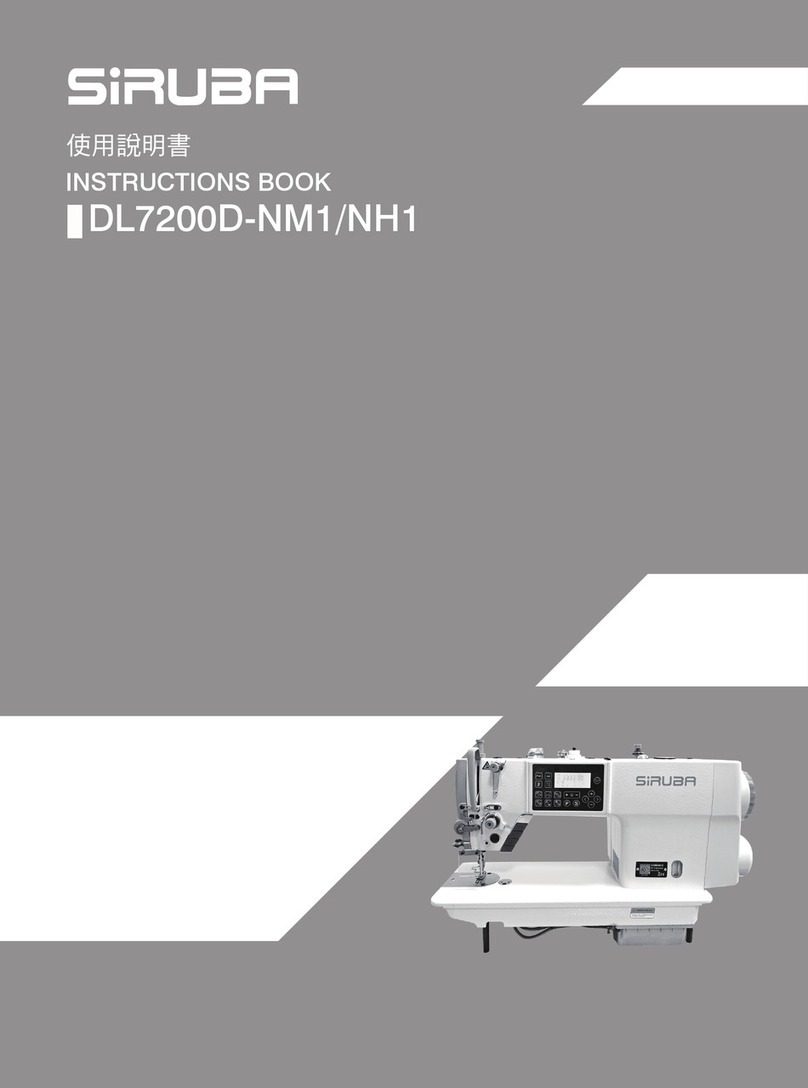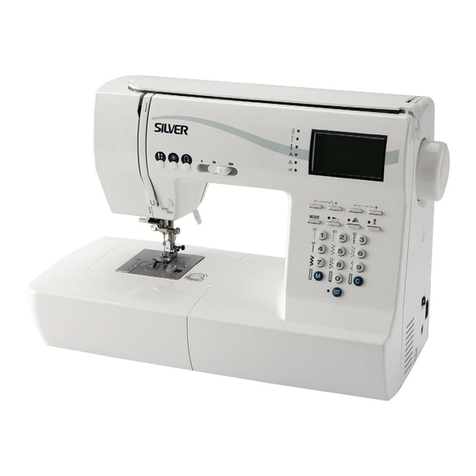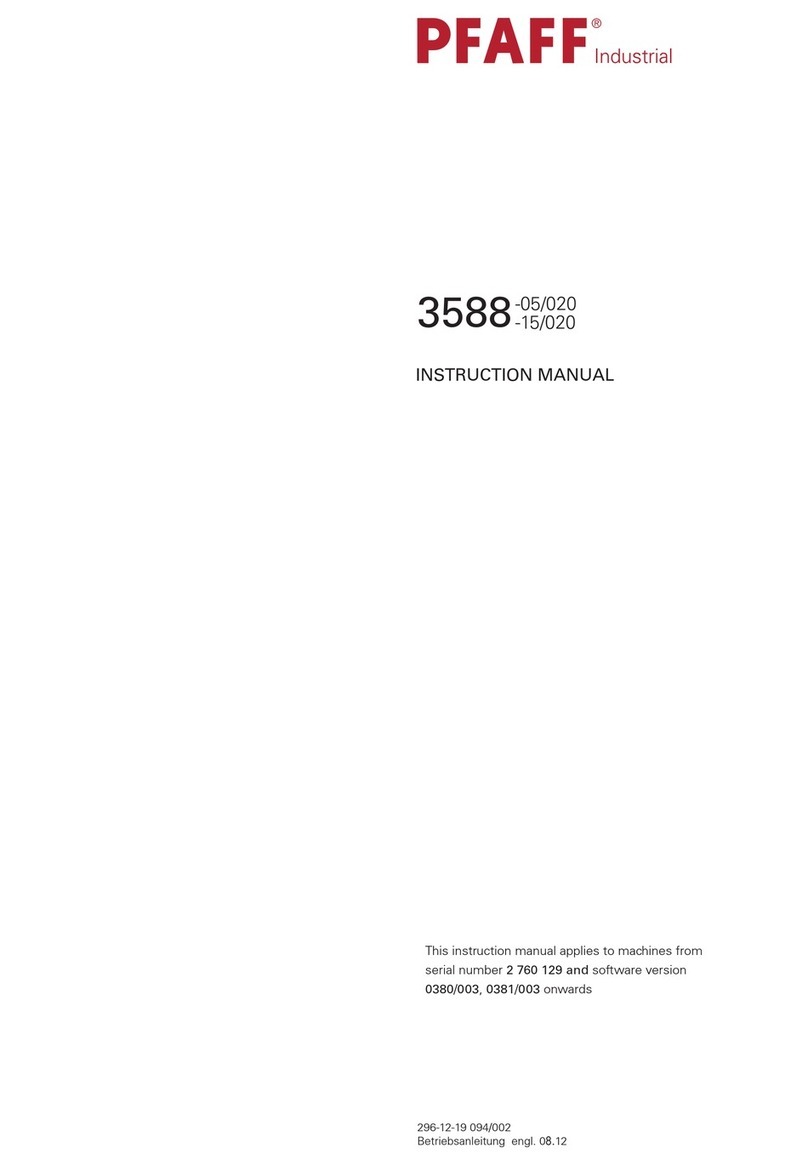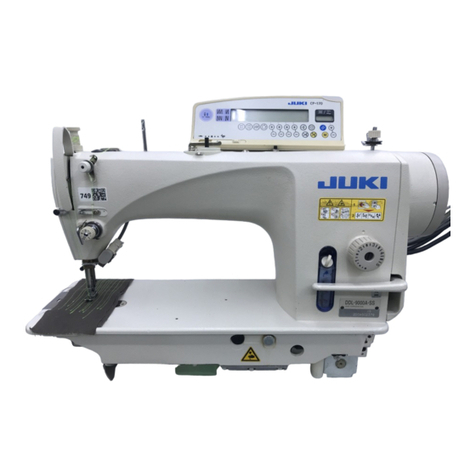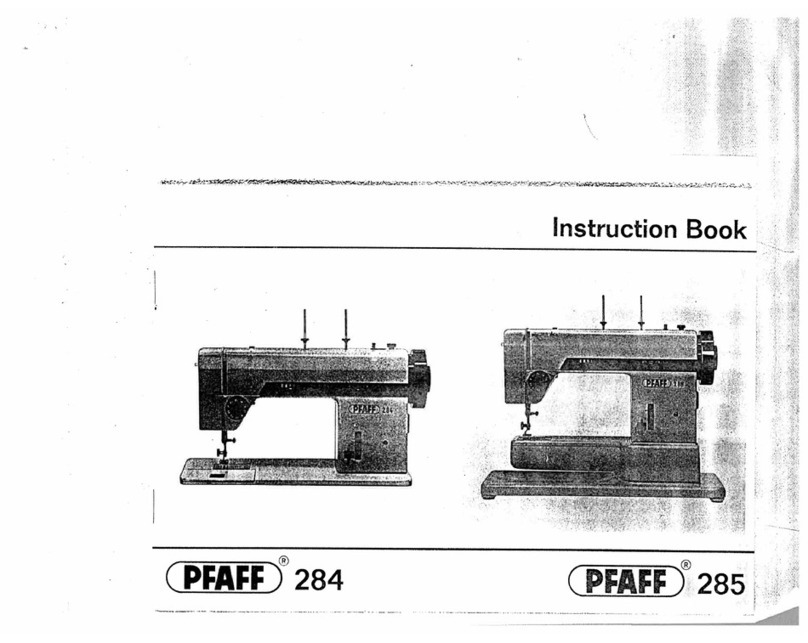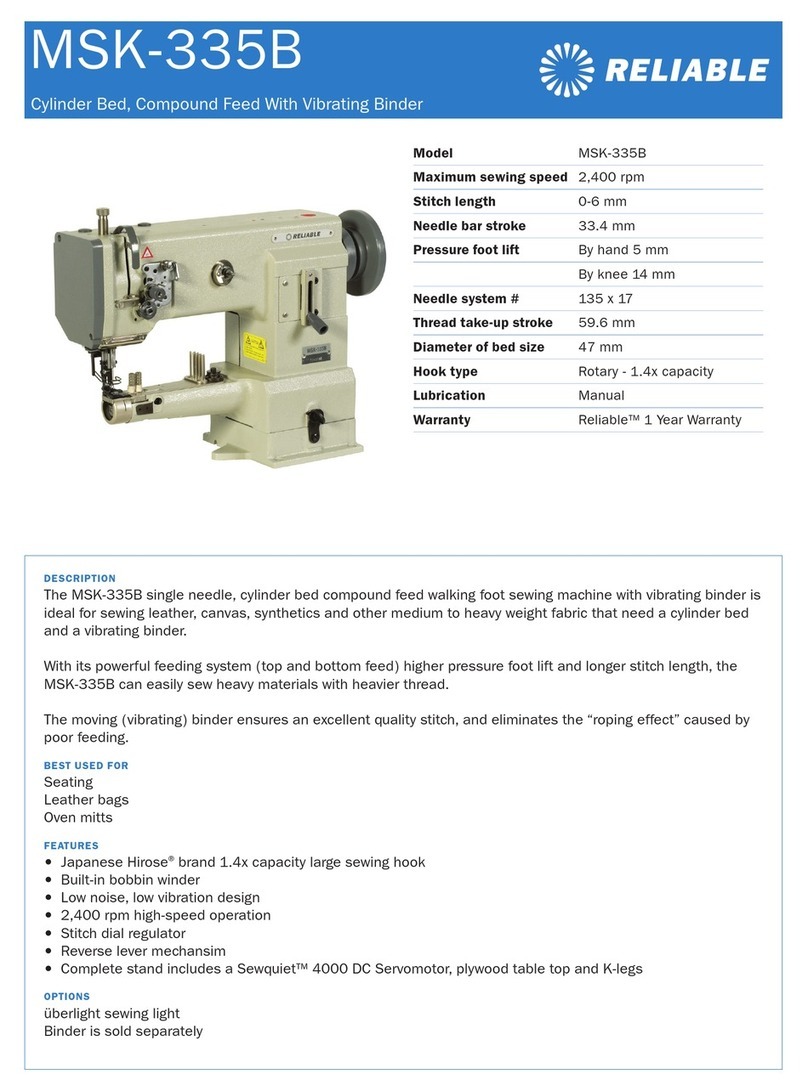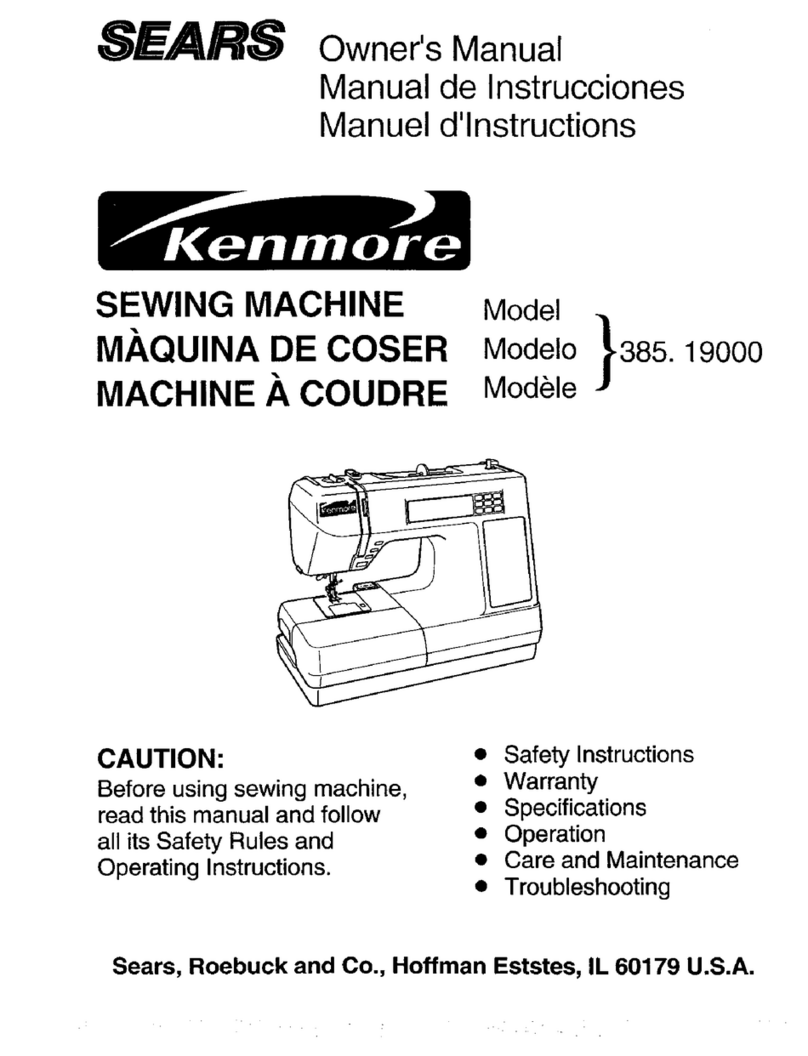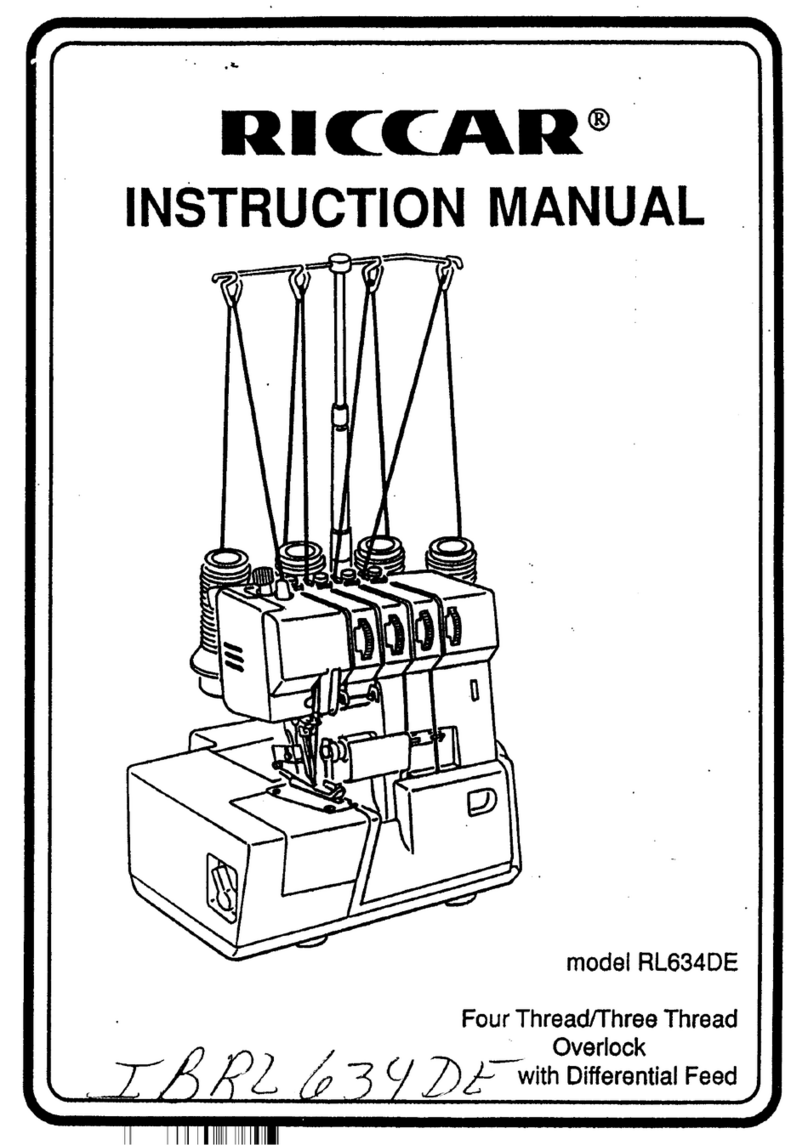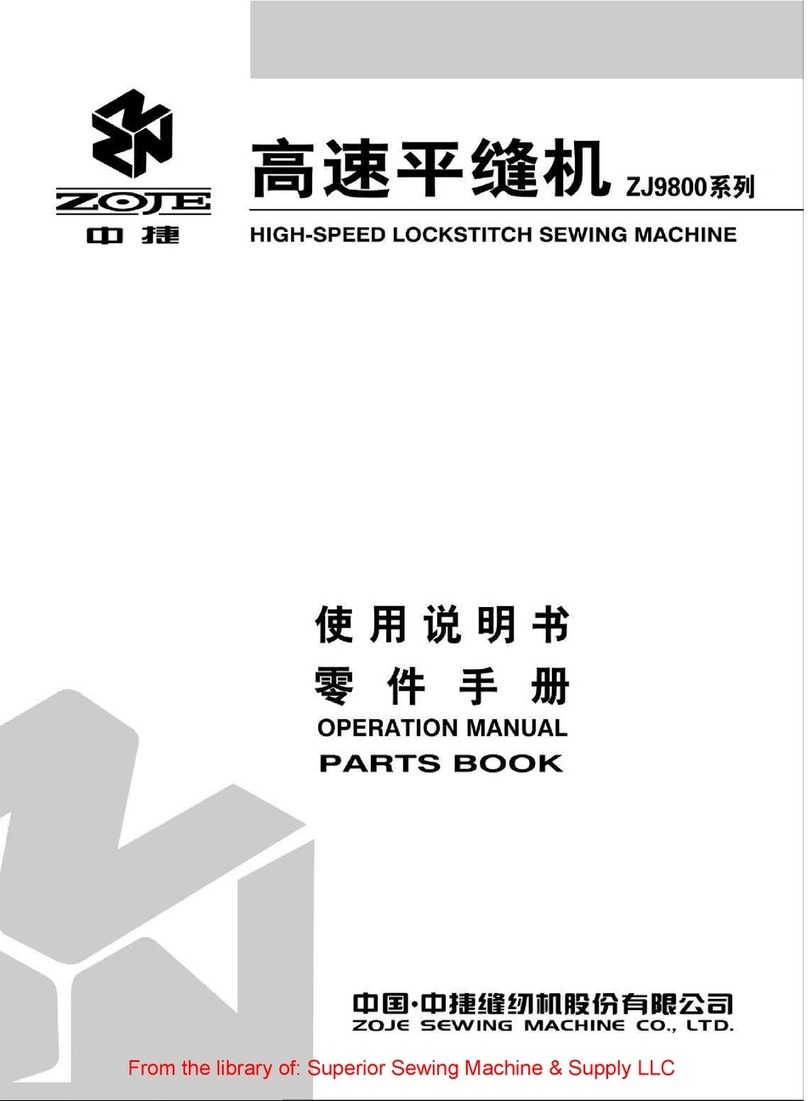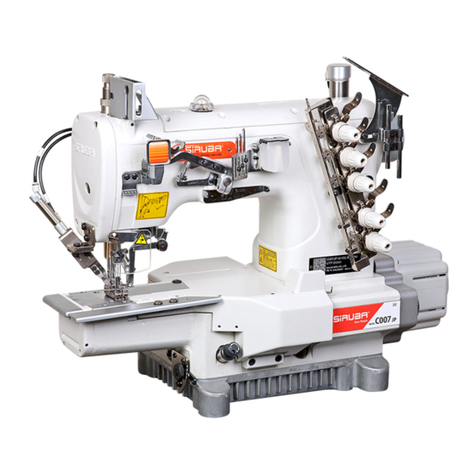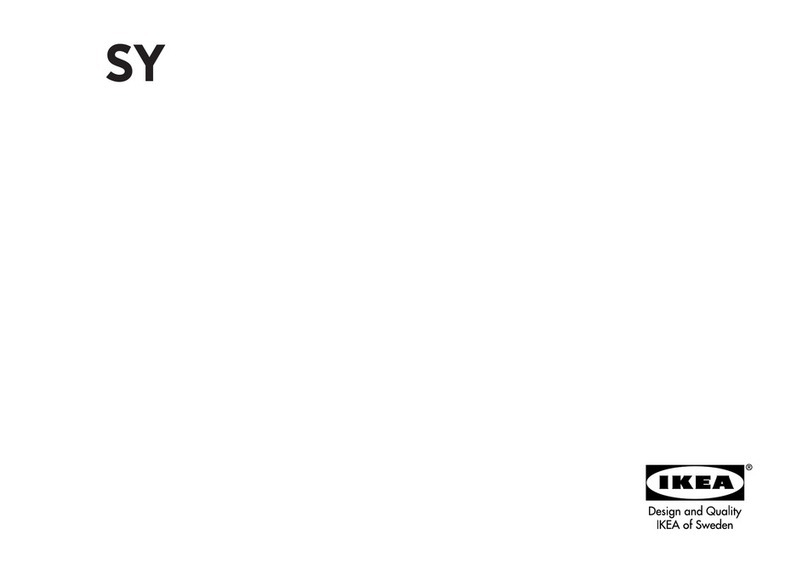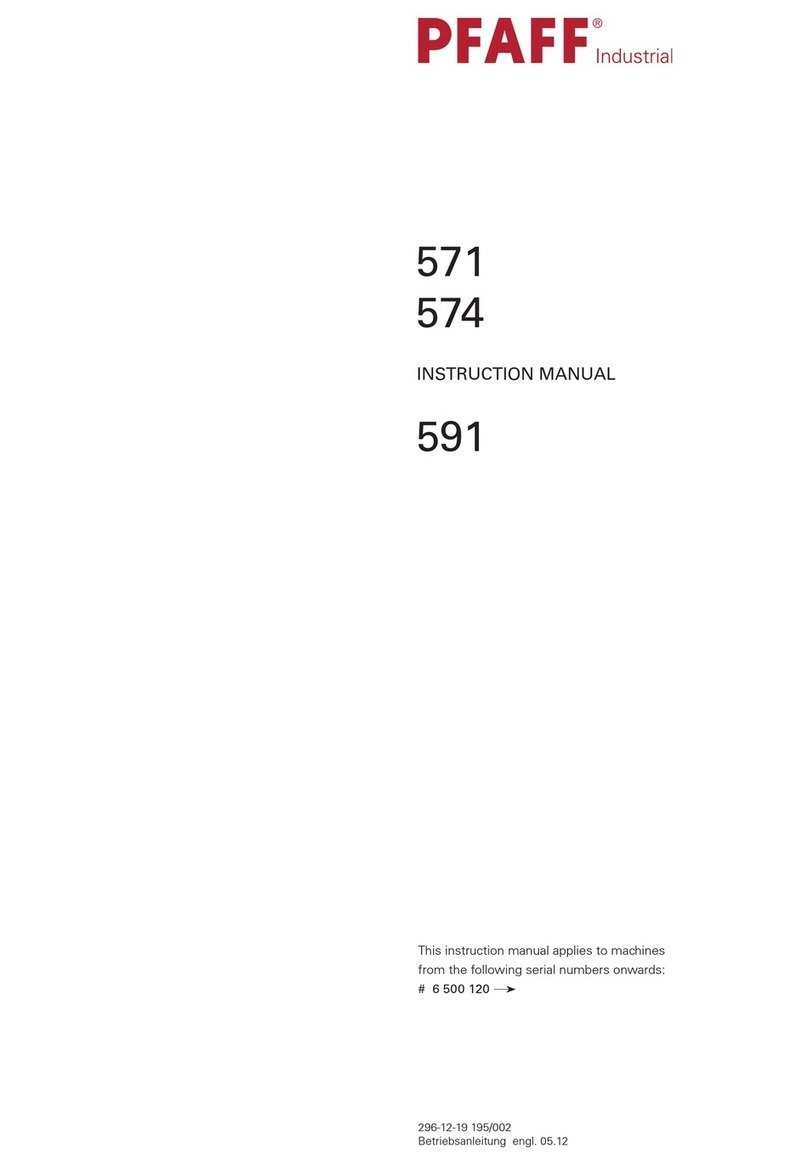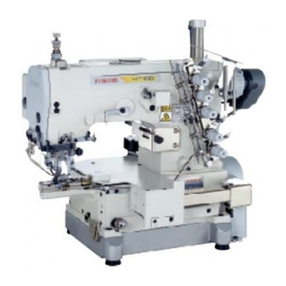} )
Flexible handling of even previously
difficult-to-sew
materials
• The focus
of
machines with -1 specification is
on
sewing materials which are thin and difficult-to-sew. As a result
of
modification
of
mechanisms such
as
the needle
bar,
thread take-up, and rotary hook, materials which were previously difficult-to-sew
can
be sewn at
high speed.
(See
page
7.)
DD71
00-1
*
for
difficult-to-sew
For
new
synthetic materials specification B737-1 for thin materials
materials specification on the B737
Needle bar stroke 29.0
mm
31.0
mm
31.0
mm
Needle
DB
X 1
#9
NS
DB
X 1 #10
NS
DB
X 1 #11
Rotary hook For thin material Plastic race (lubrication not required) For thin materials
Maximum sewing speed 4,000 spm 3,500 spm 4,000 spm
*It is possible to attach a plastic race (lubrication not required).
(In
this case, the maximum sewing speed is 3,500 spm.)
• The special tool for measuring the presser foot pressure is no longer needed. A tension gauge set enabling easy measurement
of
upper
and
lowerthread tensions is provided
as
an
optional part.
(See
page
8.)
Others
• The switches for
slow
start, correction stitch, and needle up/down stop position are provided
on
the operation panel so that you can
s~t
and check the current settings easily.
• After thread trimming, the machine can be stopped with the needle at its highest position by reversing the motor. This is useful when
changing the materials to be sewn, thick materials
in
particular.
(See
page
9.)
• Gauge parts for the 8737
and
those for other manufacturer's
can
be used.
• A lower thread detector (optional part) is provided to indicate the remaining lower thread. This is useful when sewing a product that
allows
no
overlapping or incomplete stitching.
(See
page
7.)
6

